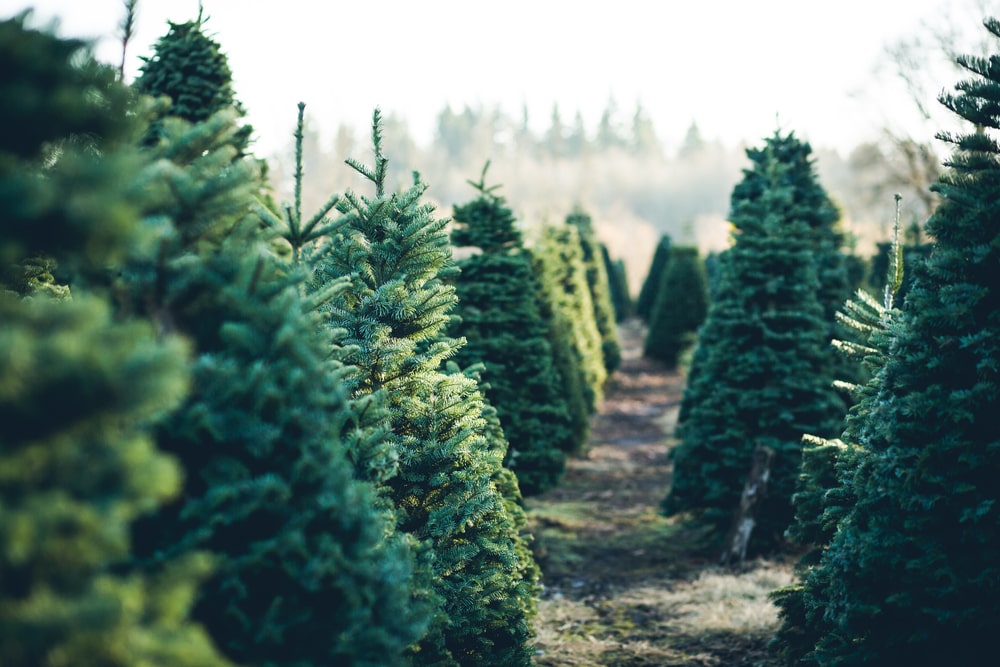THE HOLIDAY SEASON IS FAST APPROACHING
A living Christmas tree not only provides holiday cheer but can provide a valued landscape plant with proper care. Using a living tree is a “growing” – pardon the pun – trend amongst homeowners these past few years. I realize the idea of using a living tree for Christmas is not for everyone but this idea has some financial merit. But, to be successful with using a living tree for the holidays requires some forethought and a game plan. Most trees do best if they are kept outside in their natural element and planted soon after purchase. Buying an evergreen, such as a Colorado Blue Spruce, White Pine, Norway Spruce, Scotch Pine, and some other evergreens, is a frugal move to serve both as a Christmas tree and a yard tree at the same time, though a bit of a challenge.
Here are some thoughts and tips to help you in being successful with buying a living Christmas tree:
- The key to success is timing. Purchase your wanted evergreen early for the best selection and keep it outside until closer to Christmas. One of the most important issues is that a living tree should be kept inside the house no more than 10 days. Any longer period of time and the tree may begin to break dormancy and put out new growth that will die in cold winter conditions.
- When you buy the tree, place it in a garage or a shed for a couple of days to adjust to the warmer air before bringing inside.
- Location inside the house is important. Ideally, you want to place the tree in a room that is as cool as possible and away from any heat vents or direct sunlight.
- A living Christmas tree will either be ball & burlap or grown in a container. In either case, you will want the root system kept evenly moist.
- Remember, no more than 10 days inside. After Christmas, acclimate the tree to cooler air by placing it back in the garage or shed for a couple of days.
- In selecting your planting site, make sure it will accommodate the eventual size of the tree.
- In the Richmond area, our ground is not frozen in December which allows to proper planting.
- At planting time, create a good soil mix by incorporating compost with the existing soil. Plant the tree with 2 inches of the root ball above ground level. Firmly pack the soil mix around the root ball, watering as you are adding the soil mix.
- Be aware of the winter weather when it comes to rainfall. You never want a newly planted plant to go dry, even during the winter months. So, you may need to water this newly planted living tree on a weekly basis.
Finally, enjoy your tree for many years to come and the beauty that the tree will add to your landscape.
One final thought – You could choose a tropical tree that will live on as a houseplant after the holidays. The Norfolk Island pine is one of the most common species sold as a Christmas tree. It’s native to the south Pacific and can grow well indoors in a sunny spot.


do you have 4 feet Fraser fir trees ready to plant after Xmas? If so, price?
Treva,
First, thank you for reading the blogs and taking time to send me your question.
Fraser Fir trees will not grow in our area. This is why you do not see this beautiful tree grown in the landscape. Fraser Fir needs more of a mountainous environment to survive. This is why you only find the Fraser Fir as a cut Christmas tree. I wish it was a tree that could be grown in our region. Doug
How much sunlight do various types of living Christmas trees require when outside during the rest of the year? Can any of them thrive with less than a half day’s direct sunlight?
Jim,
Good Morning. Concerning your question on sunlight for living Christmas trees…all needled evergreens require a good deal of direct sunlight. I would say the minimum sunlight would be six hours. So, if you can find a spot in your landscape that gives the tree six or more hours of direct sunlight then you should be good to go. Also, it is all about “right plant, right location”. Just be aware of the growing dimensions of the tree (both height and width) and find a spot that is suitable. Let me know if you have any further questions. Happy Holidays, Doug Hensel
What native evergreens do you have (to use as Christmas trees)?
Susan,
Unfortunately, we do not have anything that is classified as native that could be used as a Christmas tree. The one obvious plant would be the Eastern Red Cedar but we are sold out for the season and will not have any more until spring. I wish we had something for you. Good luck in your pursuit. Merry Christmas, Doug